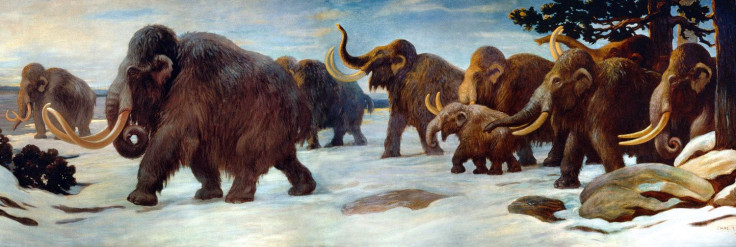Woolly Mammoth Tooth Dating Back Thousands Of Years Found By Iowa Construction Worker
KEY POINTS
- Justin Blauwet found the fossil, while overseeing a construction site
- He said he had a passion for fossils and prehistoric creatures
- The fossil was suspected to be at least 20,000 years old
An Iowa construction worker has reportedly found a mammoth tooth, while working at a site earlier this month.
Justin Blauwet was at a property owned by Northwest Iowa Community College (NCC) in Sheldon when he made the discovery. While overseeing a lift station project for the City of Sheldon, Blauwet found the woolly mammoth tooth, sitting undisturbed for tens of thousands of years, CNN reported.
The man, who has a deep knowledge of fossils and prehistoric creatures, recognized it for what it was immediately.
When asked how he was able to identify the object, Blauwet said he has always nurtured a passion for fossils and prehistoric creatures, and have been studying them for a long time.
"I am a nerd like that," he said, adding his two young sons have also started showing a huge interest in dinosaurs, according to a press release by his employer, DGR Engineering.
The company then enlisted the help of Tiffany Adrain, a paleontology repository instructor at the University of Iowa, for professional confirmation, and she verified it was a genuine woolly mammoth tooth.
Adrain suspected the specimen was linked to the last glacial maximum, which occurred 20,000 years ago. She added, since the mammoth tooth wasn't completely fossilized, long exposure to open-air can lead to it falling apart or even its disappearance. She said Blauwet was lucky to find it undamaged.
"While the discovery of mammoth remains is not uncommon in Iowa, once the bones and teeth are out in the open, they can fall apart and disappear quickly because they are not completely fossilized. This was a lucky find," she said, providing some care instructions for the antiquity, according to the DGR press release.
The tooth, measuring about 11 inches long and weighing 11.2 pounds, resembled a loaf of bread, a unique feature that made mammoth teeth relatively easy to identify.
"Mammoths have really distinctive teeth," Chris Widga, Head Curator at East Tennessee State University, told CNN. Widga determined the mammoth to be an "adult in the prime of its life" based on the degree of wear on the tooth.
Experts believe the woolly mammoths, otherwise called the Ice Age elephants for being almost the size of the modern African elephants, inhabited parts of Eurasia and North America as far back as 300,000 years ago. The mammoth population went on the verge of extinction about 11,000 years ago, and a few remaining ones took refuge off the coast of Siberia and Alaska.
Widga said it's not surprising to discover woolly mammoth teeth independent of the rest of their remains because, over time, they tend to erode out of the original area and travel to a separate spot, noting that Iowa had always been the hotspot for finding woolly mammoth fossils.
In 2013, three woolly mammoth fossils were found in Iowa during an excavation. The remains of the two adults and one juvenile mammoth, believed to be approximately 14,000 to 16,000 years old, were discovered. Scientists were able to exhume the remains after flooding unlodged the bones from their position, KCCI-TV had reported at that time.























